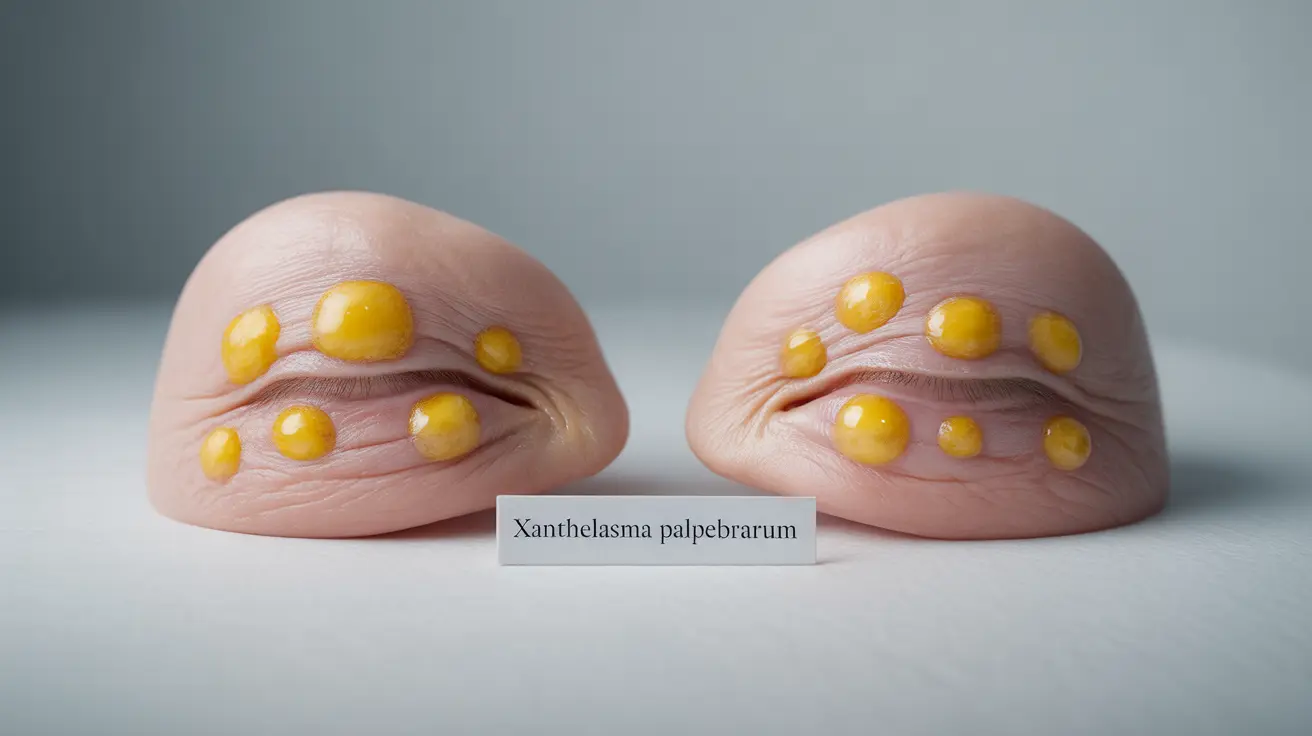Cholesterol bumps under the eyes, medically known as xanthelasma, are soft, yellowish deposits that can appear on or around the eyelids. These distinctive growths often signal underlying health conditions related to cholesterol metabolism and require proper medical attention for diagnosis and treatment.
While these bumps are generally harmless, they can be cosmetically concerning and may indicate broader health issues that need addressing. Understanding their causes, treatment options, and prevention strategies is crucial for anyone affected by this condition.
What Are Cholesterol Bumps Under Eyes?
Cholesterol bumps appear as raised, yellowish patches on or around the eyelids. These deposits consist of accumulated lipids (fats) beneath the skin's surface. They typically develop symmetrically, affecting both eyes, though they can appear on just one side. The bumps are usually flat or slightly raised and feel soft to the touch.
Risk Factors and Causes
Several factors contribute to the development of cholesterol deposits under the eyes:
- High cholesterol levels
- Diabetes
- Liver disease
- Obesity
- Family history
- Advanced age
- Female gender (women are more commonly affected)
Some individuals may develop these deposits despite having normal cholesterol levels, suggesting that genetic factors may play a significant role in their formation.
Diagnosis Process
When cholesterol bumps appear under the eyes, healthcare providers typically follow a comprehensive diagnostic approach:
- Physical examination of the deposits
- Complete lipid panel blood tests
- Blood glucose testing
- Liver function tests
- Family history assessment
Treatment Options
Medical Procedures
Several treatment options are available for removing cholesterol deposits:
- Surgical excision
- Laser therapy
- Chemical cauterization
- Cryotherapy
- Radiofrequency ablation
Alternative Approaches
Some patients may opt for less invasive treatments, though these typically show varying degrees of success:
- Topical treatments
- Natural remedies
- Dietary modifications
Prevention and Management
Preventing cholesterol deposits often involves lifestyle modifications and proper health management:
- Maintaining healthy cholesterol levels
- Regular exercise
- Balanced diet rich in fruits and vegetables
- Weight management
- Regular medical check-ups
- Smoking cessation
- Limited alcohol consumption
Frequently Asked Questions
- What causes cholesterol bumps under the eyes and who is most at risk of developing xanthelasma?
Cholesterol bumps are primarily caused by lipid accumulation beneath the skin. Individuals with high cholesterol, diabetes, or liver disease are at higher risk. Women over 40, people with a family history of the condition, and those with certain genetic predispositions are also more likely to develop these deposits.
- How can cholesterol bumps under the eyes be diagnosed and what tests might a doctor perform?
Doctors typically diagnose cholesterol bumps through visual examination and confirm underlying causes through blood tests, including lipid panels, blood glucose tests, and liver function tests. They may also review family history and assess overall cardiovascular health.
- What are the most effective treatment options for removing xanthelasma on the eyelids?
The most effective treatments include surgical excision, laser therapy, and chemical cauterization. The choice of treatment depends on the size and location of the deposits, as well as individual patient factors. Some treatments may need to be repeated for optimal results.
- Can lifestyle changes or diet help prevent or reduce cholesterol deposits under the eyes?
While existing deposits may not disappear with lifestyle changes alone, maintaining healthy cholesterol levels through diet, exercise, and weight management can help prevent new formations. A diet low in saturated fats and high in fiber can be particularly beneficial.
- Are cholesterol bumps under the eyes harmful, and do they indicate a risk for heart disease or other health problems?
While cholesterol bumps themselves are not harmful, they can indicate underlying health issues, particularly cardiovascular disease risks. Their presence should prompt a thorough medical evaluation to assess overall health status and identify any related conditions requiring treatment.




